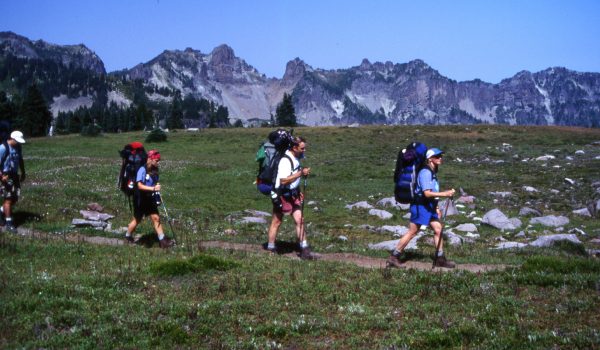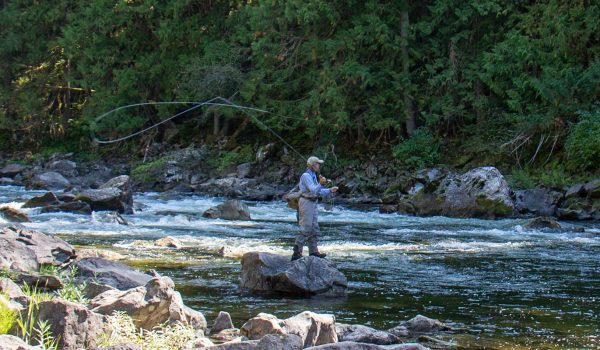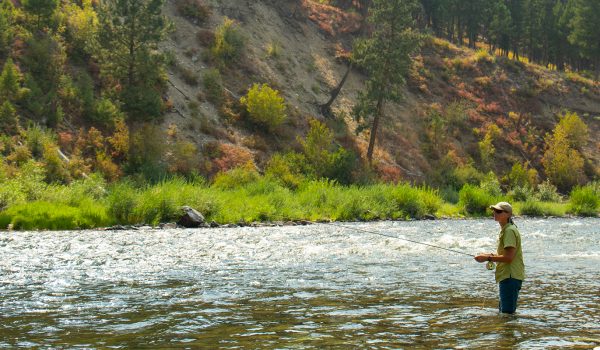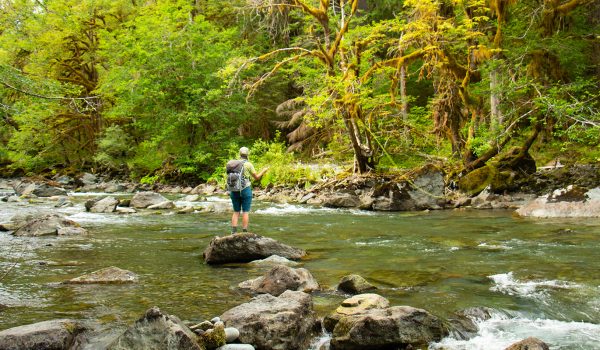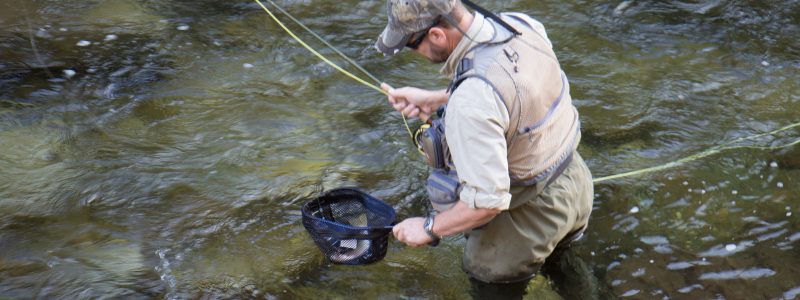
The Best Waders
Deciding on the best waders is like picking any piece of clothing – with the exception you will likely wear them for long periods of time in extreme weather while trying not to notice you have them on so you can focus on catching fish. We run separate tests for men’s and women’s waders. Gone are the days when women anglers had to purchase waders made with only men in mind and then suffer the poor fit. With several companies now providing women-specific waders ladies actually have more than one choice.
How to Pick the Best Fishing Waders for You
The Best Waders by: Brett Prettyman
Knowing when you plan to fish is one of the most important factors for choosing waders. Some fly fishers hang up their gear when the leaves start to fall along with the temperatures, while others focus their efforts during the coldest time of the year. If you are a fair-weather angler, the best wader options are going to be lightweight and highly breathable.
“The most important thing I consider when picking waders is durability – since it’s game over if they leak. I suggest anglers think about how they will be using the waders. Consider whether they will be doing a lot of bushwhacking, scrambling, traveling, riding in vehicles, rowing, etc.,” said Hilary Hutcheson, a guide and fly-fishing personality based out of Columbia Falls, Montana. “How many days are they putting in? If they are only getting in a few days without much hiking or traveling, they might be able to get away without superior durability. But anyone putting in a full season in waders should opt for heavy-duty, built-to-last, reinforced, welded, breathable waders with top-shelf booties and sturdy buckles and zippers.”
Pant waders are a great option if you don’t plan on going any higher in the water than mid-thigh. Some anglers elect to wet wade – go without waders – during warm weather. It is important to factor in the landscape when pondering fishing in shorts. A number of anglers have scars on their shins from unfriendly sticks and rocks that would have been prevented if they were wearing waders. Also, just because the weather is hot it doesn’t mean the water is the same. High mountain rivers often run on snowmelt throughout the summer and tailwater fisheries below dams usually maintain a constant cool temperature to benefit fish. Pant waders are also a good option in these cases, and if you are fishing from a dory with plans to get out and occasionally do a little wade fishing. Many waders can be folded down from the chest to the waist when fishing on warmer days.
“My favorite way to wade fish is to wet wade in thick neoprene socks and big wading boots. Anytime the water is warm enough—I may still be wearing a down parka with shorts and wading boots—I skip the chest waders,” said Kirk Nichols, a die-hard backcountry flyfisher out of Salt Lake City. “This combination works for day trips, I don’t carry wading boots or waders backpacking. For backpacking I use one of the many systems mentioned above.”
The most popular waders for summer and shoulder season anglers are typically highly breathable, durable and a less pricy than sturdier waders.
Steelheaders typically end up spending more time in waders and colder situations. They are likely to spend a little more money for more technical waders. It is more common to see fly fishers donning neoprene waders in the winter months. All the complaining about how hot neoprene can get in the summer months seems to be forgotten when anglers break ice to reach their favorite steelhead run.
“When I’m heading out for a day hiking/fishing trip and it is cold and there is snow along the banks my heavy broad-soled wading boots and chest waders fill my day pack until I start fishing. I may then spend five or six hours fishing and wading until it is time to hike out,” Nichols said. “If I have been fishing my way back toward the truck, I may choose to finish the walk out in boots and waders. If the hike out is longer, I stuff the soggy boots and waders back into the pack and put my trail runners back on and pull out the headlamp and head back to the truck.”
The latest trend style in waders is the attachable boot. Duck hunters know all about the qualities of attached boots. It is easier to get in and out of the waders – no bending over to pull on shoes and tie laces – or have them freeze in cold conditions. There are some drawbacks to attached boot waders. Unlike bootie foot waders, anglers can’t pick wading boots for different trips. Boot-attached waders also tend to be on the expensive side and might be a little much for warmer days on the water.
Many fly fishers avoid hip waders, but they are a viable option when fishing smaller creeks or places where wandering out waist-high is not necessary. Hip waders are easy to use and come with the boots attached making them a good option for a quick trip.
When considering buying a pair of waders it should help to consider the above factors, but you should also seek suggestions from other anglers. If you know any full-time fishing guides, they can provide thoughts on waders even the most hardcore anglers have not pondered.
Perhaps the most obvious thing to do when looking for waders is to find somewhere to try different brands and sizes on.
“The No.1 thing when buying a pair of waders is making sure you have the right fit. You should have enough room – with layers – to be able to squat in the catcher position. You also want to make sure that the wader stocking foot is slightly larger to allow for a pair of socks with proper circulation,” said Heather Hodson, founder of the United Women on the Fly blog and resident of Spokane, Washington. “Support local by trying on different sized waders at your local fly shop. If you’re a female, you might fit better in a men’s wader. This is an investment and you should make sure you have the right fit.”
It is important to consider socks when trying on waders. Chances are high the layer between your feet and the waders in the boot will change with the seasons. Thicker socks will be desired in the colder months and lighter models will be the choice most anglers make in the warmer months. Take two or three pairs of socks, the ones you will most likely pick for different occasions, with you when you go to try on waders. Many sporting goods stores and fly shops keep a box of socks nears the waders to help anglers should they show up in work loafers and dress socks.
Sizing
Waders are not something you want to order online and hope they fit when they arrive – particularly if you are in a hurry to get them before taking off on a week-long trip. Visit local fly shops and ask to try on all the brands they carry. It takes time, but effort on this end could save you a lot of angst on the river. Many companies work to hone in on the best fits for the different body shapes of men and women. Some are doing a better job than others. Typically, the smaller the company, or the cheaper the waders, the more generic sizing the company uses. If you are an average size, they may suit you well. If they broke the mold when you were born, you’ll want to pay extra close attention to sizing.
“Once you establish 3-5 ply Gore-Tex, the biggest factor for me in picking waders, is room in the groin. Imperative to have proper length on the inseam, or you will rip out your waders. Multiple times in and out of the drift boat in a single day can wear the inseam,” said Brian Kozminski, a guide out of Boyne City, Michigan. “Being 6’1″ and having a size 12 shoe, most waders are XL in order to get a proper fit for the boot foot. I have found either a medium long of large long/tall has been the best option.”
The trick with wader sizing is to have something that fits well, but isn’t so constricting it is uncomfortable. Don’t just think about how they fit while standing in the river. Walk around in waders when you are trying them on, do some false casting and some bending over. On the other hand, avoid waders that are too big. Excess material gets in the way and can often lead to hot spots on your feet, legs and armpits.
“I look for two things: well-fitting booties and proper crotch height. If there’s too much material in the bootie, it makes putting on your wading boots a real pain. And then once you’ve got the boots on, you need to wiggle your feet around the distribute that extra neoprene,” said Phil Monahan, a fly fishing writer, former guide and long-time player in the industry. “Never buy a pair of waders without trying them on to ensure the crotch isn’t too low. This restricts your movement and can actually be dangerous when you are wading. Make sure you can raise your knee above your waist and that you can make a looong step — the kind of thing that might be necessary after you’ve waded into an ill-advised situation.”
Pay special attention to the neoprene booties on waders without attached boots. Nothing is worse than numb toes from booties that are too tight or blisters created from excess material in your boot. Be extra cautious of this issue when considering inexpensive waders or a new style released by a trusted company. Incorrect bootie sizes are a common issue with new models.
Comfort matters when fishing. The last thing you want to be thinking about while casting for that trophy trout across the river is the monster snuggy your waders are creating between your cheeks.
“I roll around a lot in the river when I’m shooting photos and video. I need waders with give in groin and knees. I’m up and down, plus kneeling and squatting. If the cut isn’t flexible I move slower or don’t contort at all. Waders shouldn’t limit your motion,” said Kris Millgate, an outdoor videographer and writer based out of Idaho Falls, Idaho. “Same applies when I’m fishing. If there’s little cover, I crawl and fish from my knees. I need waders with flexibility and appropriate fit to do that. A fleece-lined chest pocket is also essential. I don’t have one right now and I miss it in cold weather. I end up trying to shove my hands in my armpits inside my waders to keep my fingers warm.”
Quality
Some companies making waders spend a lot of time researching the best places for seams or the best way to seal seams. For the most part, these efforts are worth the consumer’s consideration.
“Being a short female, I’ve worn ill-fitting waders most of my fly fishing life, so having waders that fit makes a world of difference between swimming in a pair and having a pair that moves with me and is durable enough to make it through the abuses I give them during a day on the water,” said Kara Armano, a serious fly fisher based out of Durango, Colorado, with more than a decade in the industry.
The main players in the wader-making business have made considerable efforts to provide something that will keep anglers dry – from the river and sweat – and keep them comfortable while enjoying their time fishing. When it comes to trusting the quality of waders it is best to go with brands that have been around for awhile—companies that have invested in their gear because they care about making return customers. If you buy cheap waders you should expect cheap performance.
“When choosing a pair of waders consider the manufacturer first and foremost. There are many choices, so do your research and choose wisely,” said Steve Schmidt, owner of a fly fishing shop in Salt Lake City. “After making that choice, fit is key to comfort and longevity. Not only will a well-fitting pair of waders be more comfortable, but more importantly you’ll get more life from them. That equates to a more enjoyable day on the water where ever you may be.”
Features
There are plenty of extras available in the wader world and some of them are actually useful. Here are some extras to consider:
Suspenders – Simple is best. The last thing you want to be doing is fiddling with your suspenders to get them adjusted correctly while your impatient buddies decide they would rather be fishing than watching you struggle with straps. Some contraptions on waders are way more complicated than they need to be. You would think that after spending 20 minutes adjusting suspenders for an individual fit that you would never have to do it again, but that is, unfortunately, not the case with the various models on the market.
Zipper – In addition to making it easy to answer the call of nature, a serious front zipper makes it easier to get in and out of a pair of waders. Yes, it does keep out the water when wading. It also makes it easy to control core temperature by moving the zipper to different heights.
“Great waders target the ‘venn diagram’, a sweet spot between breathability, comfort and durability,” said Todd Tanner, a former guide and now president of a national non-profit representing sportsmen and women based out of Big Fork, Montana. “Throw in a really good waterproof zipper and you can’t help but hit the bullseye.”
Potty break straps – Holding it in while fishing can prove a serious distraction. Knowing it won’t take half an hour of undressing and getting everything back on allows anglers to set down their rod for a second and take care of business. Anything that works and allows more precious time on the water is worth it.
“For me, apart from the obvious like durability, breathability, and comfort, it’s the little things that matter,” said Jen Ripple, editor of DUN magazine. “For instance, one brand of women’s waders has a clasp at the base of the back of the waders that you can unclip when you want to pee. This keeps your wader straps around your neck and allows you to pull your waders down without the fear of peeing on your wader straps. That was an a-ha moment when I saw it. Imagine, it took women designing women’s waders to figure that one out.”
Fleece or wool – Fleece- or wool-lined waders and booties depends on the season. In the middle of summer, anglers usually are not fond of the extra warmth, but come a December trip it makes a world of difference.
Warranty — “When picking waders the most important thing to me is the warranty,” said Heidi Lewis, an avid fly fisher out of Salt Lake City. “All waders will leak at some point!”
Pockets – With enough pockets some anglers opt to leave the fly vest home and just carry a backpack for longer stints on the water. Pockets provide easy access to the fly boxes most likely to be using during that specific outing. Sure, having too many pockets can end up wasting time because you can’t remember which pocket you put the terrestrial box in, but they are also useful for other things like floatant, sunscreen, snacks and even streamside trash picked up while fishing. Some waders have pockets designed for cameras or phones and claim to help keep them dry. Be leary of these claims.
Wading belt – Most do not consider a wading belt as an extra. In addition to helping prevent anglers from looking ridiculous with extra material billowing out as they walk or wade, a wading belt is an important piece of gear for angler safety. Wearing a belt on the outside helps prevent water from filling up the legs of waders should an angler have a fall in the river. Water inside waders can make swimming and wading to get out of the river difficult. The extra weight quickly drains important energy for a self-rescue should the worst happen.
Gravel guards – One of the most annoying things that can happen while fishing is getting some of the fine sand and gravel inside the boots and under the waders. It can be annoying and sometimes painful. Guards are frequently left in the box when anglers pull out a new set of waders or are often lost in the packing and unpacking process, but they do serve a purpose. Guards also slide over laces on wading boots and protect debris from becoming tangled in the fibers. Some waders come with attached guards. While this is convenient, it also creates more options for future leaks.
Price
Waders are not cheap. If they are, there is a reason and it usually leads to dissatisfaction. Because of the considerable investment, it is best to weigh the different options and make a decision based on input from other anglers, testing the fit and knowing which seasons they will be used most.
“You want waders that don’t leak,” said Beverly Smith, an avid fly fisher based out of Jackson, Wyoming. “Waders can be expensive and to justify that cost you better buy a pair that lasts. I’ve had better luck with waders that are on the thicker side, making them less likely to tear and wear through.”
Waders are a steep investment for many anglers. It is important to spend time searching for a pair that fit you well and provide protection from the water, and other elements. Don’t take the selection process lightly.
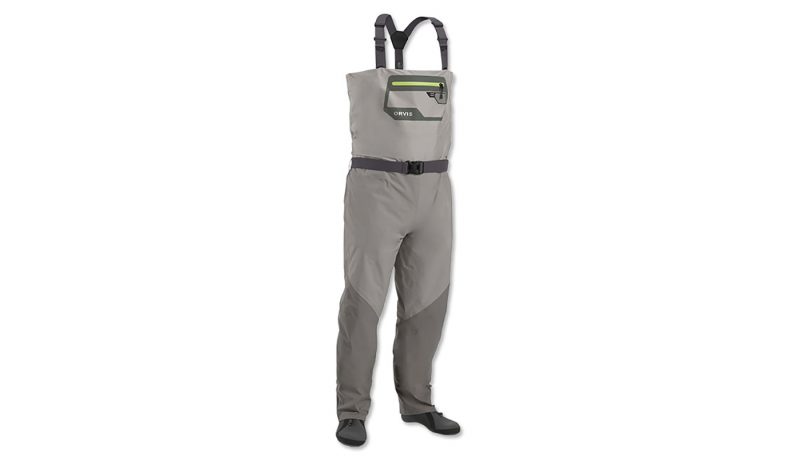
The Orvis Ultralight Wader earned high marks for fit, comfort, and over-all performance, but the Ultralights really excelled in two situations: When used on fly-fishing travel adventures, and when fishing cold rivers in warm weather. The convertible nature of the wader’s uppers make them ideal for controlling temperatures, while their weight and packability earned high marks from testers when flying out to fishing destinations.
Best for Adventure Travel
Patagonia Middle Fork Packable Wader
Fishing, Men's Fishing Waders & Waders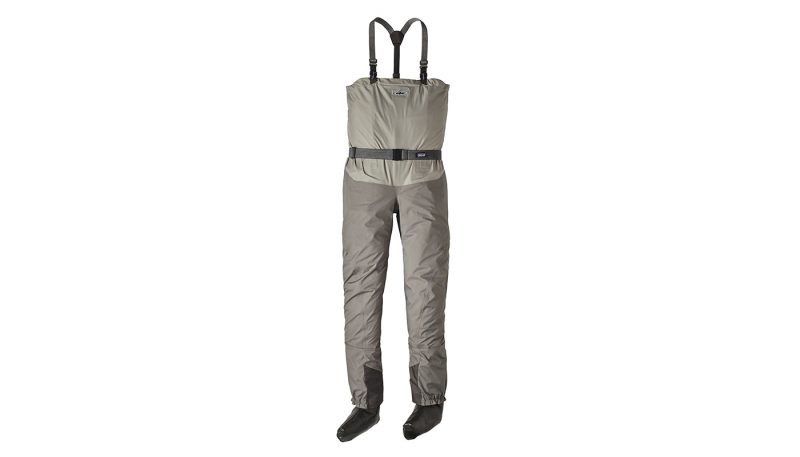
The Patagonia Middle Fork Packable Wader is the lightest and most compressible wader our testers have ever encountered, making it the hands-on favorite for backpacking and ultralight travel. But the Middle Fork gives up a bit in durability and versatility to earn that ultralight distinction. The Middle Fork Packable Waders excel in their specific niche, but aren’t ideal for general purpose use.

The Simms G3 Guide wader proved capable of handling rugged use (and abuse) in a variety of situations, prompting our team to dub them perfect for daily wear. The G3 Guides are a bit heavy, though, compared to the other models in this test — more than twice the weight of the Patagonia Middle Forks, and nearly 35 percent heavier than the Orvis Ultralights. They are also substantially less breathable than those other models, due in large part to their heavier materials used over the waterproof-breathable membrane. But weight and breathability aside, the G3 Guides earned our team’s respect for their functionality, durability, and feature-rich design.
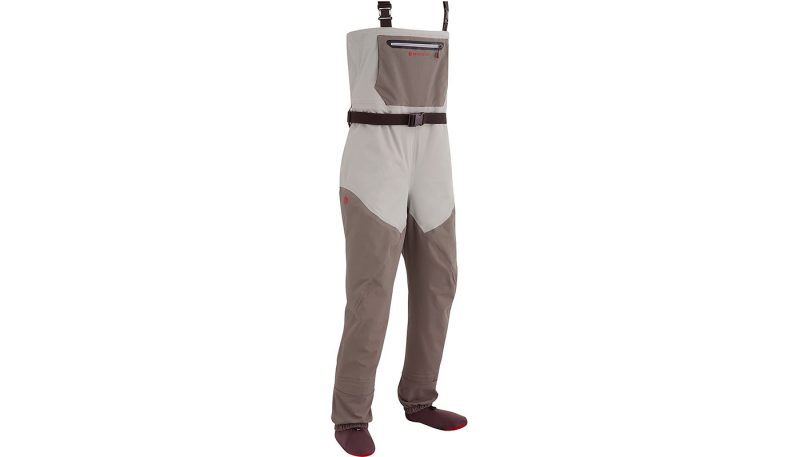
The Redington Sonic-Pro waders feature a clean design that performs well with minimal bells-and-whistles, keeping the focus function and performance rather than features and frills. The Sonic-Pro waders fit well and proved themselves to be highly durable and function in general cold-water angling applications. The lack of secondary features limits their appeal to on-the-water professionals and those who demand lots of pockets and gee-gaws, but the clean design makes them ideally suited to the casual angler who needs good in-the-water performance above all else.
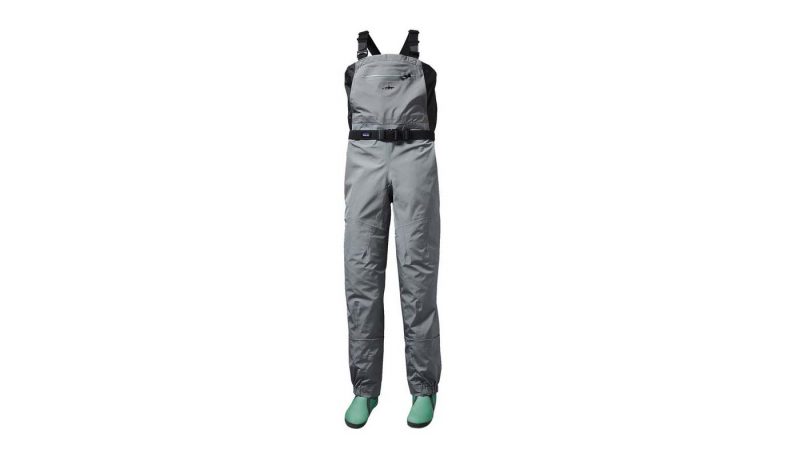
The Patagonia Women’s Spring River Waders lead the pack with their low-bulk, female-flattering fit. They also offer a feature set that caters to hard-core anglers who fish year-round.
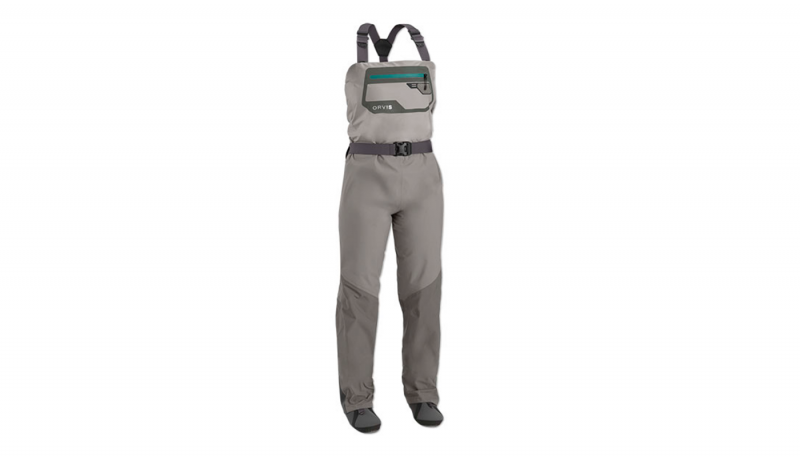
The appeal of the Orvis Women’s Ultralight Convertible Wader is the way it does everything well: From fit to breathability to durability, this is a crowd-pleasing piece of gear that satisfies diehards but isn’t overkill for entry-level anglers.
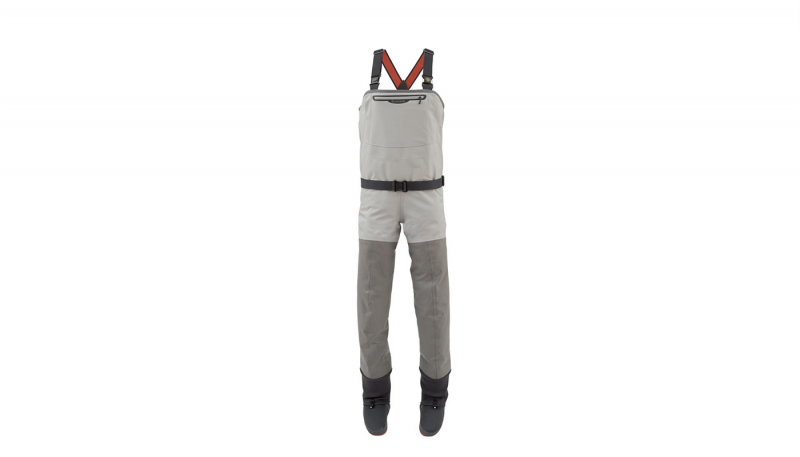
Anglers who wear waders daily should consider the Simms Women’s G3 Guide Stockingfoot Waders, which cost more than anything else we tested—but offer ample return on the investment with best-in-class durability and features aimed at expert anglers who fish frequently. They even look great, thanks to a low-bulk fit that offers full freedom of movement.
Best For Occasional Anglers
Cabela’s Women’s Premium Breathable Stockingfoot Fishing Waders
Fishing, Waders & Women's Fishing Waders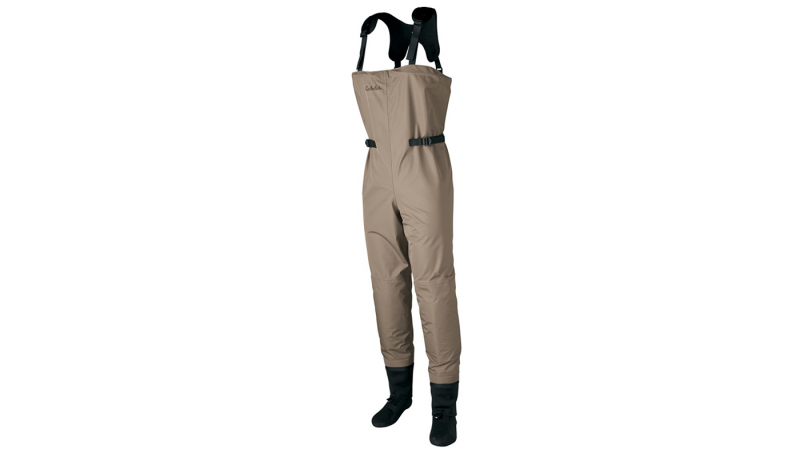
The most affordable waders in our test, the Cabela’s Women's Premium Breathable Stockingfoot Fishing Waders are surprisingly capable, and provide adequate comfort for occasional days on the water. The tradeoff is fit: The baggy cut was the least flattering of the models we tested, and suits tall women best.








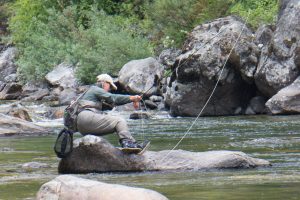
 89
89 